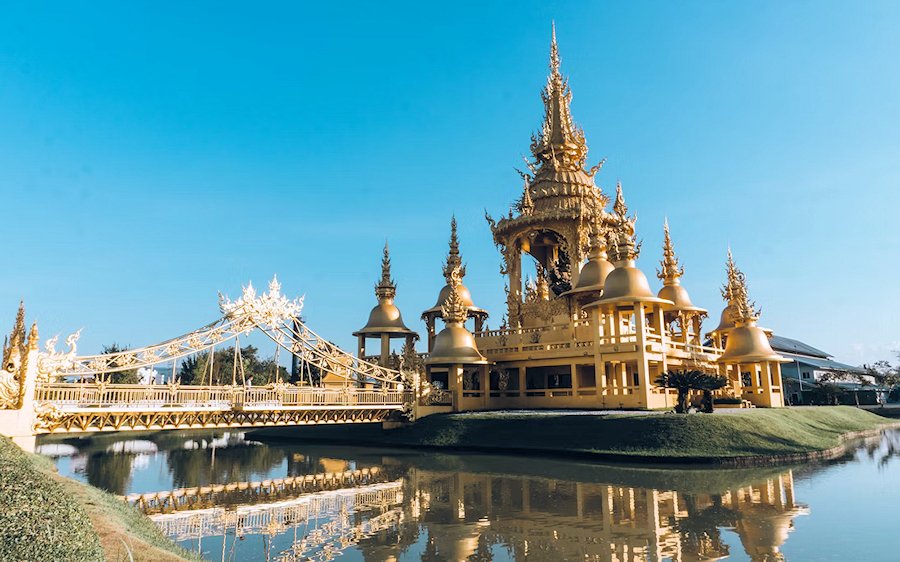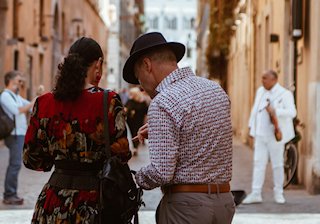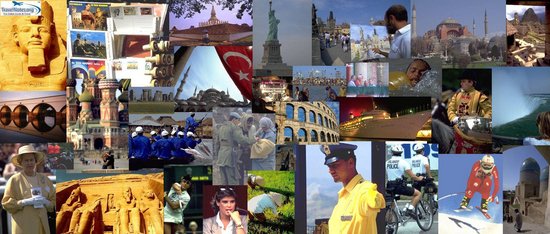Travel Notes: Destinations: Asia: Thailand - Chiang Rai Travel Guide.
Short URL: https://tnot.es/CEI
Travel Guide For Visitors to Chiang Rai
Where ancient temples meet modern artistry and hill tribes preserve centuries-old traditions, Chang Rai blends temple architecture art with hill tribe culture. Share on Facebook
Gateway to the Hill Tribes
Tucked into Thailand's northern-most corner, Chiang Rai serves as the gateway to one of South-east Asia's most culturally rich regions.
 Add a Business -
Add a Location -
Add a Lodging - Add Travel Content
- Add URL
- Travel Services.
Add a Business -
Add a Location -
Add a Lodging - Add Travel Content
- Add URL
- Travel Services.
Northen Hill Tribes and The Golden Triangle
This provincial capital is a destination that feels both exotic and authentically Thai.
The most spectacular and most famous among tourists is Wat Rong Khun (White Temple), while the most revered among the local population is Wat Phra Kaew, yet these represent only the beginning of what this fascinating region offers.
What Makes Chiang Rai Special
Unlike its bustling southern cousin Chiang Mai, Chiang Rai maintains a quieter, more contemplative atmosphere.
The city serves as your launching point into the Golden Triangle, where Thailand, Laos, and Myanmar converge along the mighty Mekong River.
This strategic location has shaped the region's multicultural character for centuries, evident in everything from the local cuisine to the diverse ethnic communities that call these mountains home.
Chalermchai Kositpipat
The artistic legacy of contemporary Thai artist Chalermchai Kositpipat has transformed Chiang Rai into an open-air gallery of temple art.
His revolutionary approach to Buddhist architecture has inspired a new generation of temple builders, resulting in structures that challenge traditional conventions whilst maintaining spiritual significance.
Best Time to Visit Chiang Rai
The best time to visit Chiang Rai is during the cool season, from October to February.
During these months, daytime temperatures hover around a comfortable 25°C, whilst evenings can be pleasantly cool.
The dry season coincides with peak tourist season, so expect higher accommodation prices and busier attractions.
The rainy season (May to September) shouldn't be dismissed entirely.
The countryside transforms into a lush tapestry of green, waterfalls reach their full glory, and hotel rates drop significantly.
Morning showers often give way to brilliant afternoons, perfect for temple hopping.
Must-Visit Temples and Attractions in Chiang Rai
Baan Dam Museum (Black House)
Artist Thawan Duchanee's dark architectural vision presents a fascinating counterpoint to the region's temple art.
This collection of traditional Lanna-style buildings, painted entirely in black, houses an eclectic mix of art, antiques, and curiosities that explore themes of death, spirituality, and human nature.
Wat Huay Pla Kang (Big Buddha Temple)
Home to the region's largest Buddha statue, this hilltop complex offers panoramic views across the Mae Kok valley.
The nine-storey pagoda houses intricate murals depicting Buddhist cosmology, whilst the surrounding gardens provide peaceful spots for reflection.
Wat Rong Khun (White Temple)
This contemporary masterpiece defies every expectation of Thai temple architecture.
Chalermchai Kositpipat's all-white creation incorporates Buddhist symbolism with modern commentary, creating a structure that photographs beautifully but reveals deeper meanings upon closer inspection.
The mirror fragments embedded in the white plaster create an ethereal shimmer that changes throughout the day.
Wat Rong Suea Ten (Blue Temple)
A vibrant counterpoint to the White Temple, this sapphire-hued sanctuary showcases traditional Lanna architectural elements enhanced with contemporary artistic flair.
The interior murals blend classical Buddhist stories with modern interpretations, whilst the striking blue exterior creates a dramatic contrast against the northern Thai landscape.
The Golden Triangle Experience
The Golden Triangle is a beautiful and mountainous area of Thailand, Laos, and Myanmar where people grew and traded opium in the past.
Today, this historically significant region has transformed into a legitimate tourist destination offering river cruises, cultural museums, and stunning mountain scenery.
The Hall of Opium museum provides context for the region's complex history, whilst boat trips along the Mekong River offer glimpses of rural life in all three countries.
The confluence viewpoint delivers the classic Golden Triangle photograph, where three nations meet along the river's banks.
Accommodation Options in Chiang Rai
Chiang Rai offers everything from budget guesthouses to luxury resorts.
Many visitors prefer staying in the city centre for easy access to the night market and restaurants, whilst others choose riverside resorts for a more tranquil experience.
Tourist Map of Chiang Rai
Use the Tourist Map of Chiang Rai to help you decide where to stay in Chiang Rai based on travel budget, preferred location, planned must-see attractions and local must-do activities.
Practical Travel Information
Getting Around Chiang Rai
Chiang Rai's compact city centre can be explored on foot, whilst temple hopping and Golden Triangle excursions require transport.
Motorbike rentals offer flexibility for independent travellers, though organised tours provide valuable cultural context and eliminate navigation challenges.
Local Cuisine
Northern Thai cuisine differs significantly from dishes found elsewhere in Thailand.
Local specialities include khao soi (coconut curry noodles), sai ua (northern Thai sausage), and various dishes influenced by Burmese and Chinese culinary traditions.
Hill Tribe Culture and Villages
Chiang Rai is home to a wide variety of hill tribes, such as the; Akha, Karen, Lahu, Lisu, Hmong, Mien/Yao and Palaung, who migrated from neighbouring Myanmar and Laos.
Each community maintains distinct cultural practices, traditional dress, and artisanal crafts that have survived centuries of change.
Responsible tourism initiatives now offer authentic encounters with these communities, focusing on cultural exchange rather than exploitation.
Village visits typically include demonstrations of traditional crafts, explanations of cultural practices, and opportunities to purchase directly from artisans.
Planning Your Visit to Chiang Rai
Three full days is plenty of time to visit all the beautiful temples in and around Chiang Rai, experience a tea plantation and enjoy the local night market in the evenings.
This timeframe allows for a relaxed exploration of the main attractions without feeling rushed.
Extended stays offer opportunities for trekking in the surrounding mountains, visiting tea plantations, and exploring more remote hill tribe villages.
The region's proximity to the Laos and Myanmar borders also makes it an excellent base for regional exploration.
Cultural Etiquette
Temple visits require appropriate dress - covering shoulders and knees.
Remove shoes before entering prayer halls, and maintain quiet, respectful behaviour.
Photography is generally permitted in temple grounds but may be restricted in certain areas.
When visiting hill tribe villages, ask permission before photographing people, and consider the impact of your visit on local communities.
Purchase crafts directly from artisans when possible, and be aware that some cultural practices may not be suitable for casual observation.
Beyond the Tourist Trail in Chiang Rai
While the White Temple and Golden Triangle dominate most itineraries, Chiang Rai rewards explorers who venture beyond the standard route.
Local markets, lesser-known temples, and countryside excursions reveal a more authentic side of northern Thai culture.
Coffee Culture
The region's emerging coffee culture, influenced by hill tribe farmers transitioning from opium production, offers another layer of cultural exploration.
Estate visits and cupping sessions provide insights into sustainable agriculture and economic development in the region.
Remarkable Region
Chiang Rai delivers an authentic northern Thai experience that balances spectacular sights with genuine cultural encounters.
Whether drawn by the artistic temples, intrigued by the multicultural heritage, or seeking adventure in the Golden Triangle, this remarkable region offers experiences that linger long after departure.
More City Travel Guides
City Guides: Cities in Africa - Cities in America - Cities in Asia - Cities in Australasia - Cities in Latin America - European Cities and Regions.
More From Travel Notes
Travel Notes Online Guide to Travel
Africa - Asia - Caribbean - Europe - Middle East - North America - Oceania - South America.
The Travel Notes Online Guide to Travel helps visitors plan their trip with country and city travel guides, local tourist information, reviewed web sites, and inspiring travel content.
Travel and Tourism Guides on Travel Notes
 If you find Travel Notes useful, please take a moment to
like us on Facebook and share with your friends on social media.
If you find Travel Notes useful, please take a moment to
like us on Facebook and share with your friends on social media.
Share on Facebook
Travel Resources
.
Travel & Tourism With Industry Professionals.







